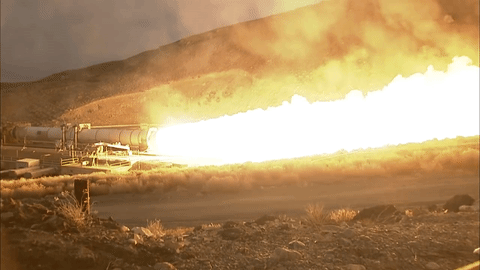Your gateway to endless inspiration
Slsfiredup - Blog Posts
Four Cool Facts About Our New Rocket’s Booster Test Firing
The countdown to our last full-scale test firing of NASA’s Space Launch System (SLS) solid rocket boosters has begun (mark your calendars: June 28, 8:05 a.m. MDT [local time] 10:05 a.m. EDT). SLS is NASA’s new rocket that can go to deep space destinations, and this test is one more step on our Journey to Mars. This test will be broadcast live on NASA TV and our Facebook page. For those watching at home or work, here are four cool things that might not be so obvious on the screen.
1. So Hot, It Turns Sand Into Glass

With expanding gases and flames exiting the nozzle at speeds in excess of Mach 3 and temperatures reaching 3,700 degrees Fahrenheit, say goodbye to some of the sand at Orbital ATK’s test facility in the Utah desert because after the test, the sand at the aft, or rear, end of the booster motor will be glass.
2. This Motor’s Chill

This motor has been chilling — literally, down to 40 degrees — since the first week in May in Orbital ATK’s “booster house,” a special building on rails that moves to enclose the booster and rolls back so the motor can be test-fired. Even though SLS will launch from the normally balmy Kennedy Space Center in Florida, temperatures can vary there and engineers need to be sure the booster will perform as expected whether the propellant inside the motor is 40 degrees or 90 degrees (the temperature of the propellant during the first full-scale test, Qualification Motor 1 or QM-1).
3. This Booster’s on Lockdown

If you happen to be near Promontory, Utah, on June 28, you can view the test for yourself in the public viewing area off State Route 83. And don’t worry, this booster’s not going anywhere — engineers have it locked down. The motor is held securely in place by Orbital ATK’s T-97 test stand. During the test, the motor will push against a forward thrust block with more than three million pounds of force. Holding down the rocket motor is more than 13 million pounds of concrete — most of which is underground. The test stand contains a system of load cells that enable engineers to measure the thrust the motor produces and verify their predictions.
4. Next Time, It’s For Real

These solid rocket boosters are the largest and most powerful ever built for flight. They’ve been tested and retested in both full-scale and smaller subsystem-level tests, and vital parts like the nozzle, insulation and avionics control systems have been upgraded and revamped. Most of this work was necessary because, plainly put, SLS needs bigger boosters. Bigger boosters mean bolder missions – like around the moon during the first integrated mission of SLS and Orion. So the next time we see these solid rocket motors fire, they will be propelling SLS off the launch pad at Kennedy Space Center and on its first flight with NASA’s Orion spacecraft. For real.